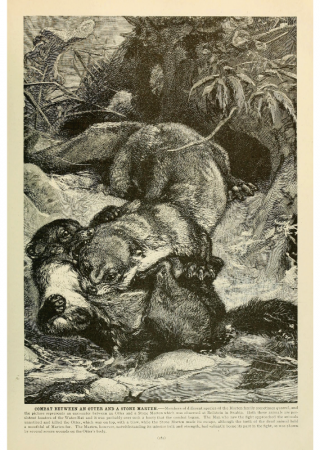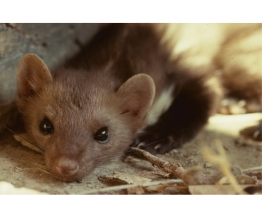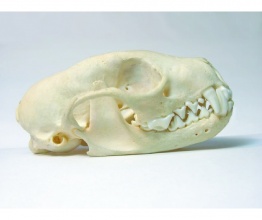Beech Marten
- …beech martens love to gnaw automobile wires in half?
- …martens may be chased out of a home by distributing dropping of large wild cats where they reside?
- …in captivity, young martens may be readily tamed, and with the proper care, remain tame even after maturing?
- …in high mountain ranges during summer months, martens may be found up to 4000 meters elevation?
- …beech martens are important distributors of seeds of fruiting plants?
Beech martens are carnivorous mammals of the Mustelidae family, gray-brown in color with a white ruff. They are mainly nocturnal, living in places with plenty of cover, like edges of forests, rocky terrain, quarries and near human dwellings. They move in short jumps and are excellent climbers. They are often found in attics or old structures, where they hunt rodents, birds, eggs, small invertebrates and various remnants of food. Martens mate in the summer. The females give birth in February or March, after a six-week gestation period. Average litter size is three cubs. They are blind for the first five weeks, and leave the mother at around two months. In captivity, martens live up to seventeen years. In nature, where they have many enemies, they usually live only three years.




